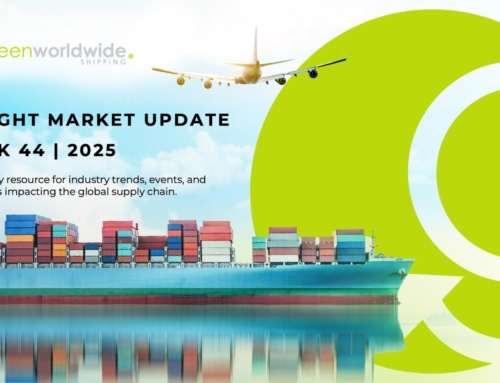West Coast Contract Deadline: July 1, 2022
International Longshore & Warehouse Union (ILWU)
Leadership – Willie Adams
VIDEO: Port of Los Angeles Executive Director Gene Seroka Interviews ILWU LeadersPacific Maritime Association (PMA)
Leadership – Jim McKenna
VIDEO: A Message from PMA President & CEO Jim McKenna
As the existing port labor contract between the International Longshore & Warehouse Union (ILWU) and West Coast employers, led by the Pacific Maritime Association (PMA), quickly approaches the July 1, 2022, expiration deadline; both sides began negotiations towards a new contract two-days early, on Tuesday, May 10th in San Francisco, California.
WEST COAST COOPERATION
U.S. shippers are nervous that, much like in previous years, and despite reassurances from the ILWU, discussions will not be finalized by July 1st, and West Coast supply chains will face work slowdowns at ports, aggravating the already strained global trade system.
The White House is watching with intense scrutiny and has already warned labor and management leadership that work slowdowns would be unacceptable with existing supply chain bottlenecks and impact to U.S. consumers.
This year, however, there is an underlying tone of hopefulness, unlike negotiations of the past, from the cooperation built between West Coast employers and dockworkers during the COVID-19 pandemic. Leadership from both sides have made public statements to “engage in good-faith talks without work disruptions.”
VOLATILE ISSUE OF PORT AUTOMATION
Before negotiations began, the PMA released a study reviewing automation potential for West Coast Ports. PMA President, Jim McKenna, hopes to make the case for a win-win scenario, citing increased efficiency in handling more cargo, resulting in more jobs, from automation at two south California terminals.
“Since the pandemic surge, these terminals have processed Twenty-Foot Equivalent Units (TEUs) twice as fast as the San Pedro Bay’s conventional container terminals; container throughput per acre has been, on average, 44% higher.”
Description: The study, which analyzes new public and previously unpublished data, was commissioned by the Pacific Maritime Association during the Covid-19 pandemic, when a surge of Asian imports exposed severe shortcomings in the U.S. supply chain. The ports of Los Angeles and Long Beach, which process 40% of containerized imports from Asia, bore the brunt of this influx. They handled record levels of cargo, but backlogs – at times more than 100 ships anchored offshore awaiting berths – underscored the need for the country’s largest port complex to enhance terminal efficiency and productivity to accommodate growing container volumes and stanch the diversion of cargo to East Coast and Gulf Coast ports.
The existing contract prohibits “interference by the union with the employers’ right to operate efficiently and to change methods of work and to utilize labor-saving devices.”
The ILWU, however, believes the study only highlights that productivity gains in one port mean job losses at another. Both East and West Coast labor unions strongly oppose cargo-handling automation at terminals and claim optimizations reached in south California have caused hundreds of cargo-handling jobs losses at TraPac and LBCT terminals.
Stay up-to-date on freight news with Green’s Weekly Freight Market report by following us on Facebook, Twitter, and LinkedIn. For continuous updates, make sure to check out our website at greenworldwide.com.





